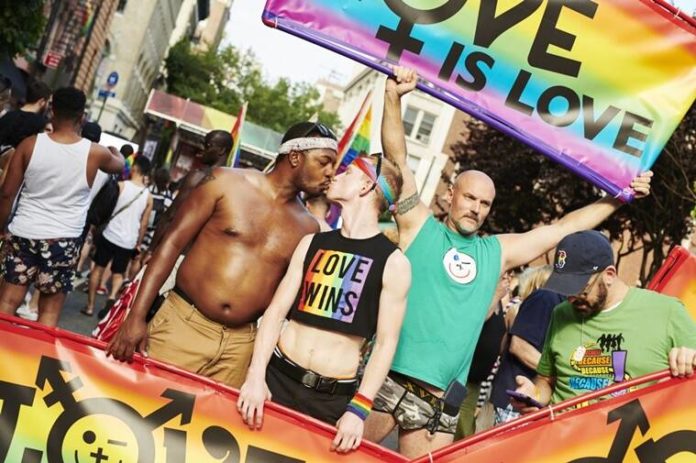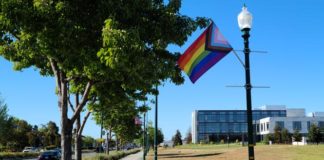David DeParolesa is trying to revive an endangered species: the gay bar.
His plan was hatched in 2020, as DeParolesa watched storefronts darken one by one in his Midtown Manhattan neighborhood, Hell’s Kitchen. The 40-year-old tech executive started wondering if Covid-19’s economic devastation might be an opportunity to fulfill his long-held dream of opening a gay bar. Not just a place to drink and dance, he said, but “a place for community.”
Buy Now | Our best subscription plan now has a special price
When DeParolesa brought the idea to friends in that dark winter before vaccines were widely available, they were enthusiastic, including one who agreed to back him financially. “We all realized something we were missing,” says DeParolesa. “We liked being in a room with each other, with music. We were all suffering from not being able to dance to the new Dua Lipa album.”
Best of Express Premium
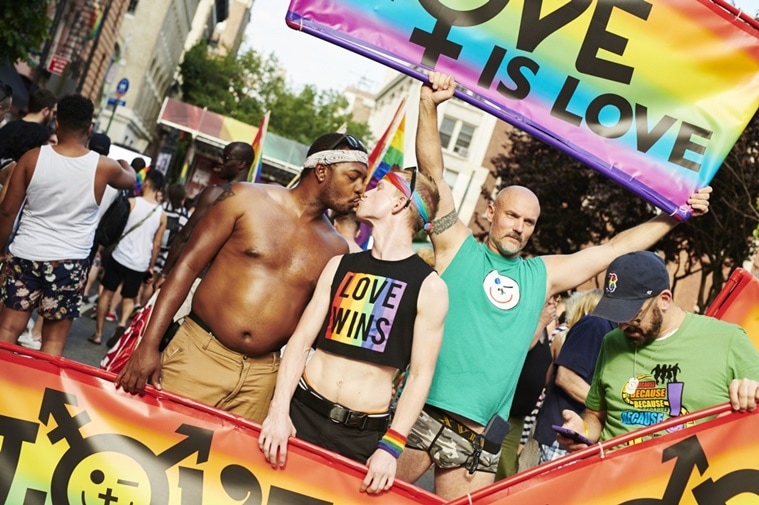 The Stonewall Inn 50th anniversary commemoration rally brought 5 million visitors to New York. (Photographer: Gabby Jones/Bloomberg)
The Stonewall Inn 50th anniversary commemoration rally brought 5 million visitors to New York. (Photographer: Gabby Jones/Bloomberg)
For at least a century, LGBTQ people have found bars indispensable places to meet friends and lovers, organize politically, feel safe, and let loose. But in the past few decades, gay bars in the US and around the world have been closing at a steady rate, done in by a complex mix of factors that social scientists are still puzzling out.
Until recently, New York City, the birthplace of Pride, bucked that trend. From 1997 to 2017, the city added LGBTQ clubs, according to an analysis of bar listings by Oberlin College sociology professor Greggor Mattson. But since then, more than a quarter of its gay bars have closed—a steady shrinking of the scene both before and after Covid.
The struggles of LGBTQ spaces reflect a broader flagging of New York’s nightlife. Mayor Eric Adams came into office lamenting that the City That Never Sleeps seemed to be taking a nap. “We used to be the coolest place on the globe. We’re so damn boring now,” he told Stephen Colbert in November, justifying why the 61-year-old went clubbing late on the Tuesday night he won office.
Three years ago, 5 million visitors crowded into Manhattan for one of the biggest parties in history, the 50th anniversary of the Stonewall Inn uprising, which also coincided with WorldPride, a biannual celebration that roams the globe. Since 2019’s Pride, Covid-19 has transformed the city. New York’s streets are emptier and less safe. Its jobless rate is two-thirds higher than the national average. Still missing are many of the tourists, office workers, audiences, and super wealthy people who bolstered New York’s claim to be the world capital of finance, style, and culture.
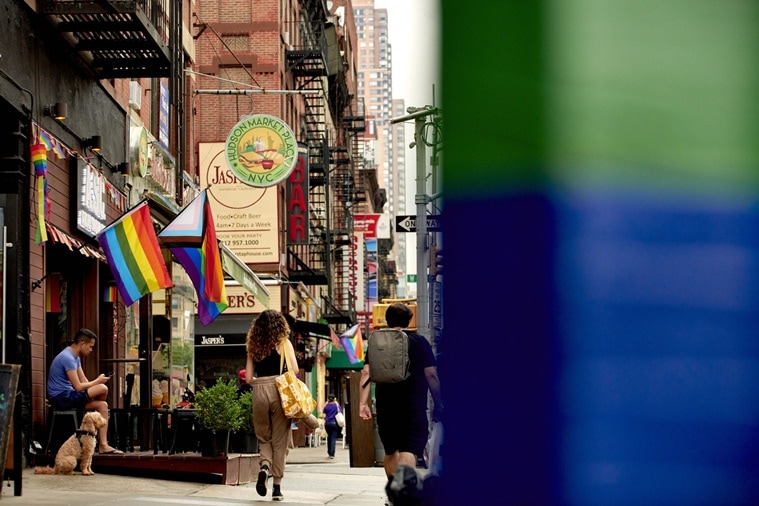 Restaurants and bars welcome New York Pride Week in Hells Kitchen on June 22. (Photographer: Gabby Jones/Bloomberg)
Restaurants and bars welcome New York Pride Week in Hells Kitchen on June 22. (Photographer: Gabby Jones/Bloomberg)
Covid variants spoiled not just 2021’s “hot vax summer” but the lucrative holiday season, when restaurants and bars save up to survive slow winters. A $29 billion bailout fund ran out of money, leaving two-thirds of US bars and restaurants with nothing. Because other federal aid came via loans, many owners are loaded up with unsustainable debt. “Every possible bad scenario keeps getting thrown at us,” says Rachel Nelson, owner of Happyfun Hideaway, a queer dive bar in Brooklyn’s Bushwick neighborhood.
The obstacles are no less daunting for those trying to fill New York’s empty storefronts.
A newcomer to nightlife, DeParolesa initially wanted to open for Pride, “the Black Friday of gay culture,” last year. He never imagined he’d be racing to open by 2022’s Pride, the first held fully in person since 2019. To renovate a former Thai restaurant and open a “new kind of gay bar” he’s calling VERS, he’s had to contend with the city’s cutthroat real estate market, its notoriously slow and expensive construction industry, supply chain delays, and the challenges of hiring experienced staff.
Making it all worse: New York’s labyrinthine bureaucracies and the encyclopedia of ancient and inconsistently enforced rules imposed on bars, restaurants, and nightclubs. Inspectors might fine owners for a dim lightbulb in a closet, a rag on a counter, or sidewalk planters that grew too tall, says Andrew Rigie, executive director of New York City Hospitality Alliance, an association of restaurants and nightlife venues.
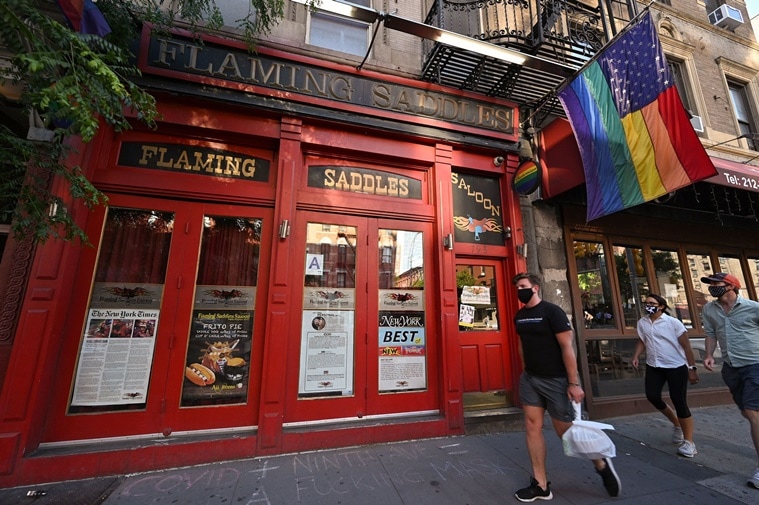 Flaming Saddles Saloon in Hells Kitchen was temporarily closed during New York City Pride Week 2020 because of state coronavirus restrictions. (Photographer: Dia Dipasupil/Getty Images )
Flaming Saddles Saloon in Hells Kitchen was temporarily closed during New York City Pride Week 2020 because of state coronavirus restrictions. (Photographer: Dia Dipasupil/Getty Images )
Opening up a space requires a tortuous monthslong vetting by block associations, community boards, and multiple state and city agencies, all with the power to hamper or entirely block your new space for almost any reason. “There are tons of people who would have wanted to open bars and nightclubs who never file an application,” Rigie says.
Hell’s Kitchen became the center of New York’s gay life as LGBTQ businesses and people shifted north from Chelsea and the West Village. On Ninth Avenue, VERS’s location, “there’s basically a gay Pride parade happening every day,” DeParolesa says.
Despite this, he had to spend much of 2021 winning over his neighbors and the local board, deploying a charm offensive that sometimes resembled a political campaign. Only then could he apply to the State Liquor Authority, a backlogged agency that, while scrutinizing everything from restrooms to menu choices, can take six months to even respond. DeParolesa’s provisional liquor license arrived after seven months, at the end of May and only weeks before Pride.
The state and city are taking steps to speed up permits, reduce fines, and pare back the thicket of rules that nightlife businesses must navigate. Governor Kathy Hochul approved the legalization of to-go cocktails and hired more than 30 new staff to process liquor applications.
Mayor Adams laid out a plan this month to jolt New York awake by making it easier for businesses to open and expand. In a city that often just says “no” to entrepreneurs, he said, “we are going to turn New York into a ‘City of Yes’—yes in my backyard, yes on my block, yes in my neighborhood.” Proposals, which still need City Council approval, include scrapping 96-year-old zoning rules that technically ban dancing in most of the city. (Parts of the racially motivated Cabaret Law were repealed in 2017, but that only affected some zoning districts.)
Even if the reforms work, they won’t come in time for everyone.
When it became clear regulatory approvals were taking too long, Daniel Nardicio, an LGBTQ nightlife veteran, and his partners canceled plans to open their new club, Red Eye NY, by Pride—even though the space, on a gritty block in the shadow of the Port Authority bus terminal, attracted little opposition from neighbors. They’re planning its debut for September, after the often slow summer months.
DeParolesa was hoping for at least a soft opening on Pride weekend, but at the last minute, with dozens of loose ends to tie up, he had to delay VERS’s premiere until the following week. Meanwhile, he’s been paying rent since March, dipping into the cash reserves set aside for any summer doldrums. The endless, expensive process is daunting for someone who previously worked in digital spaces.
“I created a tech company I could put online the same day I imagined it,” says DeParolesa, chief executive officer of Give Lively, an organization that helps other nonprofits raise money online. “For individuals like me who are not independently wealthy and just trying to start something for the first time, the barrier to entry is incredibly high.”
“The economics and regulation environment have just made it very, very difficult for young people to get into the business anymore,” says Ian Schrager, the hotel mogul who in 1977 co-founded the legendary Studio 54 at age 30, opening just six weeks after signing a lease.
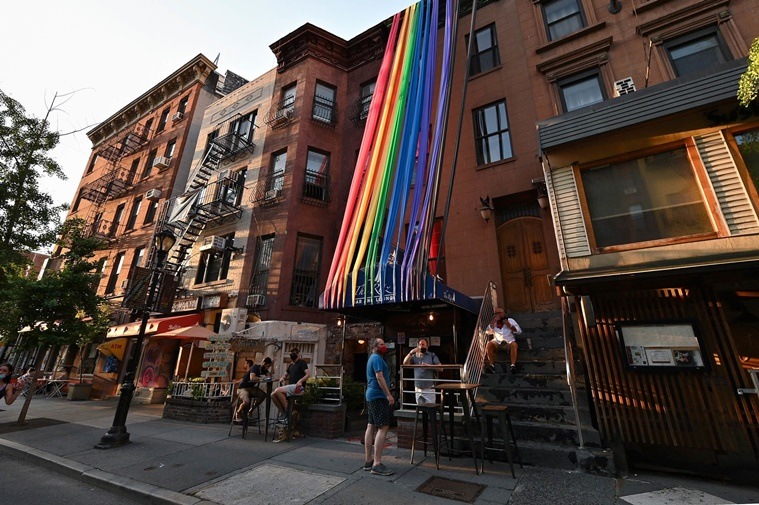 Customers sit at tables outside the Ritz Bar and Lounge in Hell’s Kitchen in New York City. Pride Week in New York City usually brings an influx in business to gay and lesbian bars throughout the city. This year due to the ongoing coronavirus pandemic, most Pride events have been canceled and bars remain closed in accordance with city restrictions. (Photo by Dia Dipasupil/Getty Images) (Photographer: Dia Dipasupil/Getty Images North America)
Customers sit at tables outside the Ritz Bar and Lounge in Hell’s Kitchen in New York City. Pride Week in New York City usually brings an influx in business to gay and lesbian bars throughout the city. This year due to the ongoing coronavirus pandemic, most Pride events have been canceled and bars remain closed in accordance with city restrictions. (Photo by Dia Dipasupil/Getty Images) (Photographer: Dia Dipasupil/Getty Images North America)
Nightlife faces similar problems worldwide. In the past decade, New York and more than 40 cities have appointed “night mayors,” tasked with promoting and helping out nightlife industries strangled by red tape, gentrification, and other challenges. “Historically, this industry has been criminalized and overly restricted,” said Ariel Palitz, head of New York’s Office of Nightlife, at a Hospitality Alliance event this spring.
Assuming new spaces can ever open, they must keep up with customers’ ever-shifting tastes. One trend has been toward food and away from drinking. The number of US establishments classifying themselves as full-service restaurants rose 17.9% from 2006 to 2016, a Mattson analysis found, while bars shrank 10.5%.
Gay bars declined even more, with closures hitting marginalized groups the hardest. Mattson estimates a 37% decline in US LGBTQ bars from 2007 to 2019, led by a 52% drop in lesbian bar listings and a 59% plunge in LGBTQ bars serving people of color.
Driving the losses are new competition—from nongay venues where LGBTQ people now feel more comfortable, from dating and hookup apps such as Grindr (set to go public with a $2.1 billion valuation), and from more and more readily available queer culture, like VH-1’s Ru Paul’s Drag Race or Netflix’s Heartstopper. “Gay bars haven’t been the center of gay life for quite some time,” Mattson says, even if “most of us need them at some point in our lives.”
When Covid-19 hit, an additional 15% of US gay bars disappeared, according to a 2019 to spring 2021 tally. That’s remarkably consistent with the bars’ pre-pandemic trend, though there were some positive trends: For instance, 100% of the country’s remaining lesbian bars stayed open during that period. Several of the gay bars New York lost in 2020 were replaced or reopened—and more, like VERS and Red Eye, are on the way.
The key to VERS’s survival will be constant experimentation, DeParolesa says, echoing far more experienced nightlife operators.
“Being a good nightlife impresario is really being able to read the cultural trade winds that are going on. What are people into?” says Schrager. When he reopened his Public Hotel last year, the 75-year-old outsourced revamping the club in the basement to the young creators of House of Yes, a theatrical, gender-bending club and performance space in Bushwick. House of X opened in November.
Nardicio’s Red Eye will be a hybrid: by day a coffee shop; by evening a podcast studio and event space capable of broadcasting live on the internet; and at night a place to dance and drink—including nonalcoholic beverages. Bar owners “need to start thinking outside the box,” Nardicio says. “I have to throw the party I want to go to. New York is a hard place to live, but the most amazing things happen here.”
📣 For more lifestyle news, follow us on Instagram | Twitter | Facebook and don’t miss out on the latest updates!

